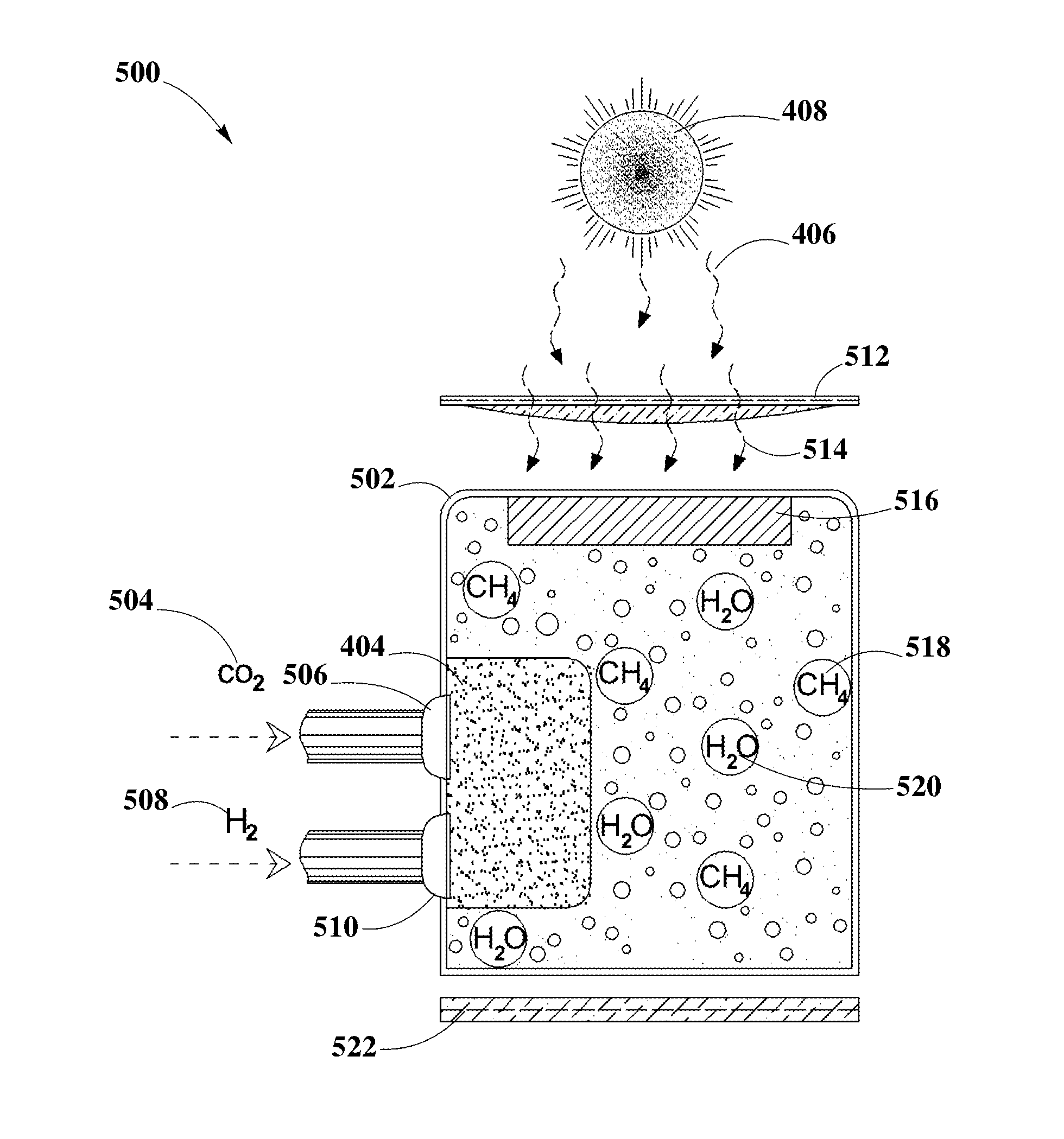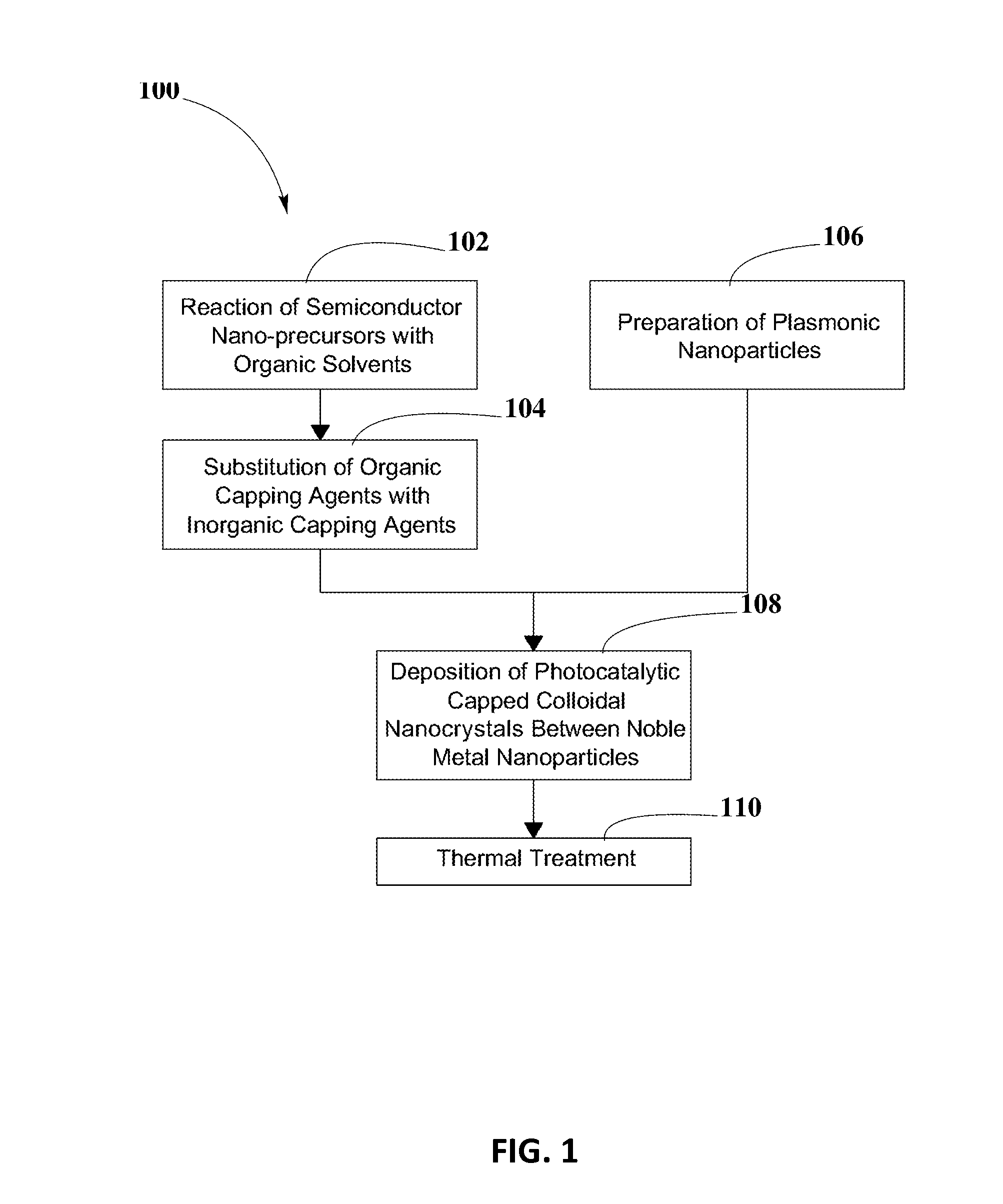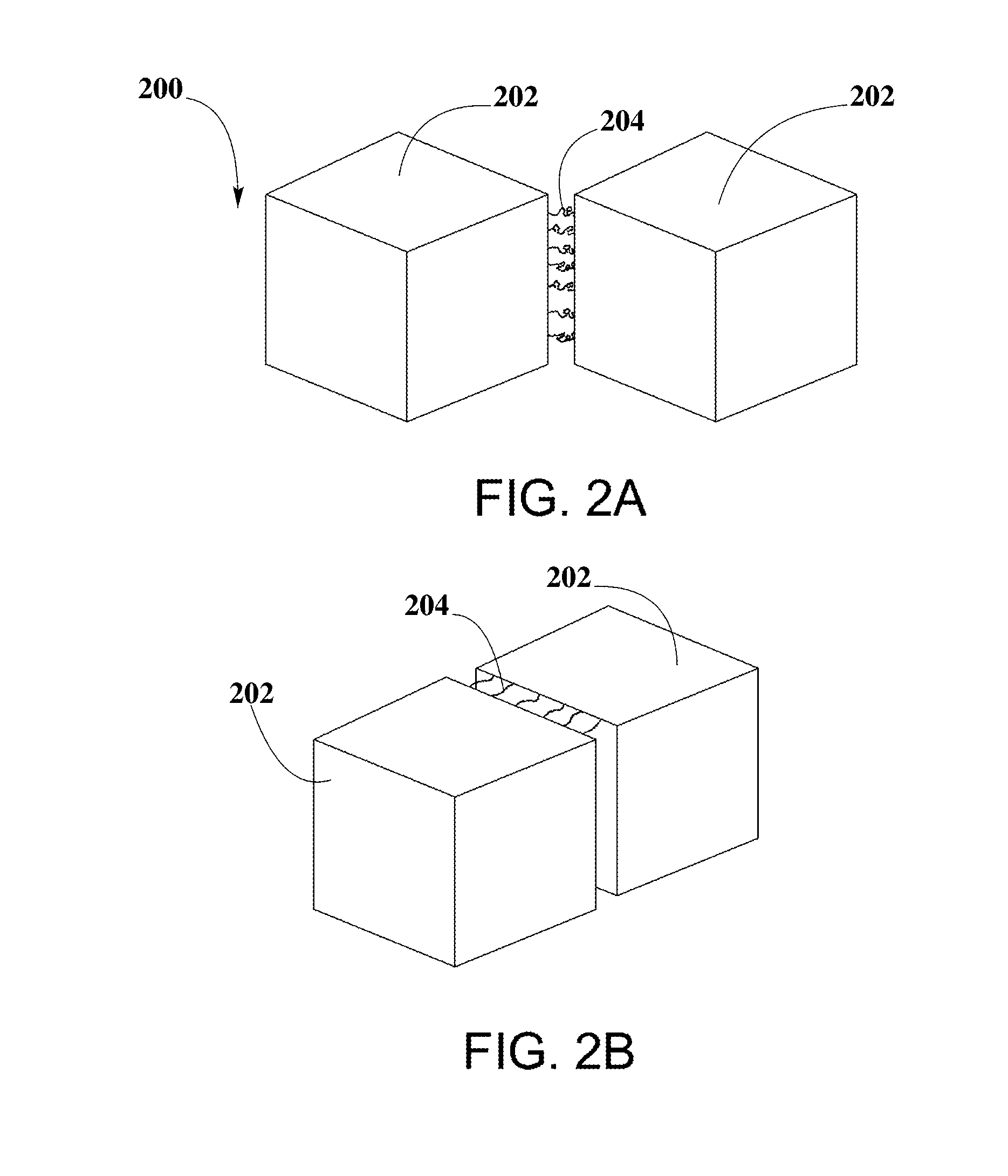Photocatalytic CO2 Reduction System
- Summary
- Abstract
- Description
- Claims
- Application Information
AI Technical Summary
Benefits of technology
Problems solved by technology
Method used
Image
Examples
examples
[0107]Example #1 is an embodiment of PCCN 302 in spherical shape 800, as shown in FIG. 8, which may include a single semiconductor nanocrystal 802 capped with a first inorganic capping agent 804 and a second inorganic capping agent 806.
[0108]In an embodiment, single semiconductor nanocrystal 802 may be PbS quantum dots, with SnTe44− used as first inorganic capping agent 804 and AsS33− used as second inorganic capping agent 806, therefore forming a PCCN 302 represented as PbS.(SnTe4;AsS3).
[0109]The shape of semiconductor nanocrystals 802 may improve photocatalytic activity of semiconductor nanocrystals 802. Changes in shape may expose different facets as reaction sites and may change the number and geometry of step edges where reactions may preferentially take place.
[0110]Example #2 is an embodiment of PCCN 302 in nanorod shape 900, as shown in FIG. 9. According to an embodiment, there may be three CdSe regions and four CdS regions as first semiconductor nanocrystal 902 and second se...
PUM
| Property | Measurement | Unit |
|---|---|---|
| Water vapor permeability | aaaaa | aaaaa |
| Pressure | aaaaa | aaaaa |
| Flow rate | aaaaa | aaaaa |
Abstract
Description
Claims
Application Information
 Login to View More
Login to View More - R&D
- Intellectual Property
- Life Sciences
- Materials
- Tech Scout
- Unparalleled Data Quality
- Higher Quality Content
- 60% Fewer Hallucinations
Browse by: Latest US Patents, China's latest patents, Technical Efficacy Thesaurus, Application Domain, Technology Topic, Popular Technical Reports.
© 2025 PatSnap. All rights reserved.Legal|Privacy policy|Modern Slavery Act Transparency Statement|Sitemap|About US| Contact US: help@patsnap.com



